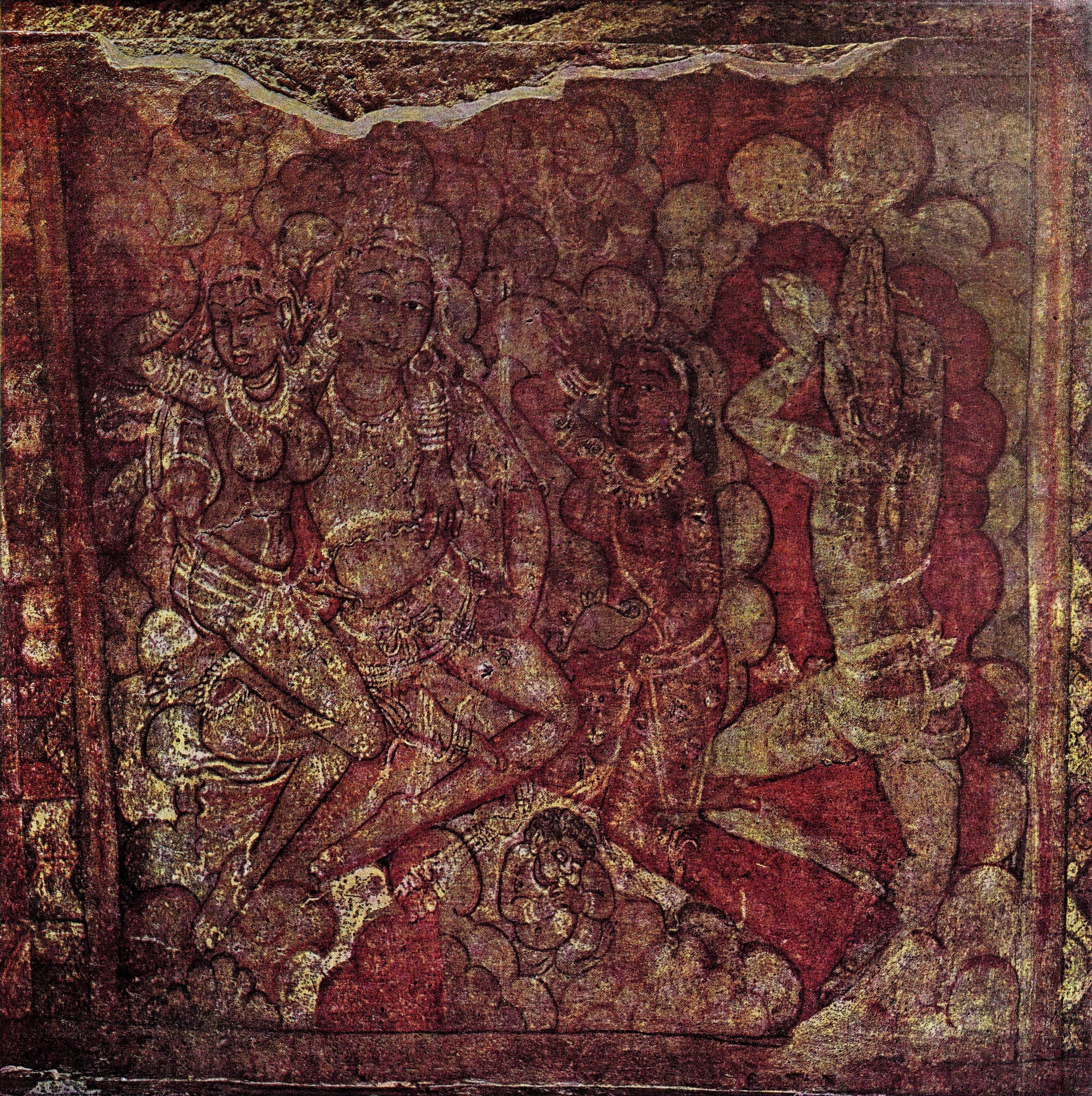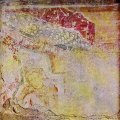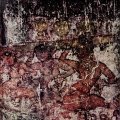Vijayanagara Paintings: photo 3
Photo 3 of 37 in Gallery: Vijayanagara Paintings

Image title: Plate 3: Flying Vidyadharas (Ellora)
Description of the photo
[Full title: Flying Vidyadharas, Rashtrakuta, Ellora, 9th century. (Courtesy: Skira)]
Another, a painting of Lakṣmīnārāyaṇa on Garuḍa, is also interesting. Here we note for the first time the peculiar eyes and the pointed nose in three quarter view, which latter, in developed form, becomes a distinguishing feature of the Western Indian paintings from Gujarat of the fourteenth-fifteenth century, and here we have also the beginnings of a style that culminates in the Vijayanagara period. Flying figures of Vidyādharas with their consorts, against trailing clouds forming the background, musical figures and other themes, closely follow early Chalukya tradition.
This is usually seen by comparing these figures with those from the Bādāmī caves of earlier date. The colour patterns, the flying celestials with their arrangement, one dark against the other fair, the muktāyajñopavīta, sacred thread of pearls of the male and the elaborate dhammilla, braid of the female figures, the flying attitudes, etc. are all incomparable. They are, as Kramrisch puts it, “direct descendants of the flying figures of the Gaṅgā relief at Māmallapuram [Māmallapura].”
Gallery information:
This plate is contained in the book “Vijayanagara Paintings”, a valuable aid to the understanding of Indian iconography (also known as śilpaśāstra). The Vijayanagara empire was established in 1335 by Harihara, Harihara, Kaṃpa and Bukka (sons of Saṅgama) and grew to be a dominant power in the South. Painting has been considered in the Citrasūtra of the Viṣṇudharmottara, the early standard text on painting, as the premier art.
Photo details:
High resolution:
Download file
Size: 2.80 MB
Resolution: 2785 x 2794
© Copyright: see gallery source

